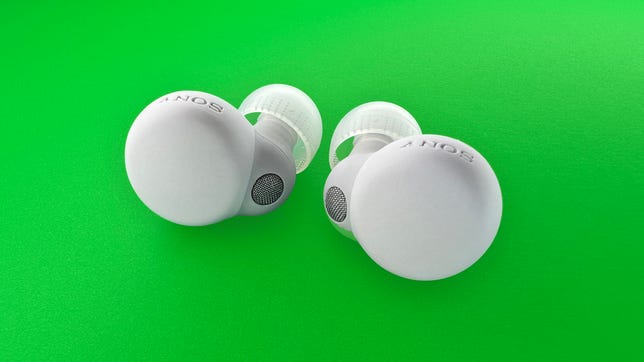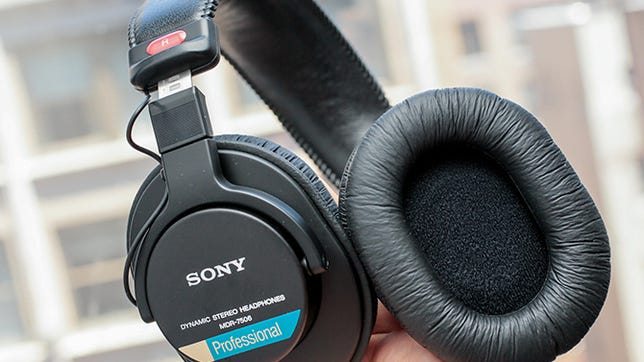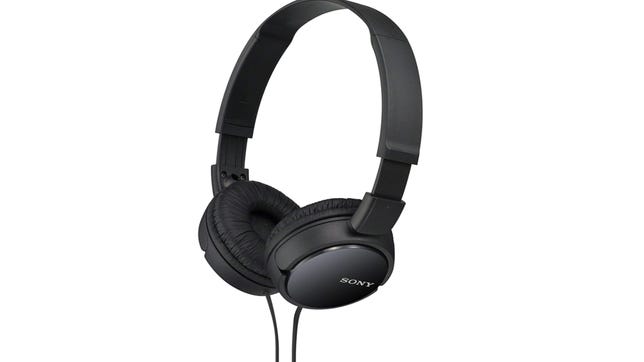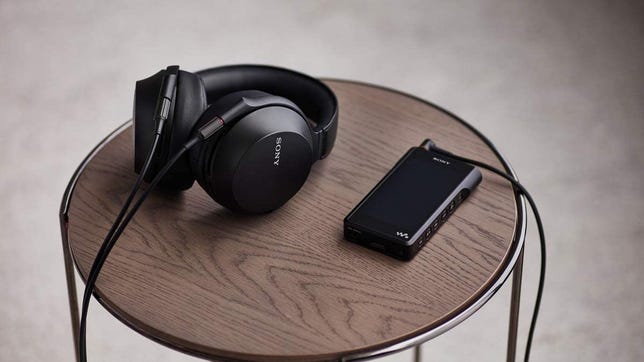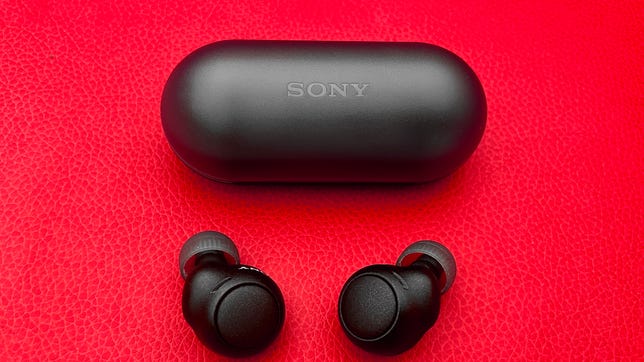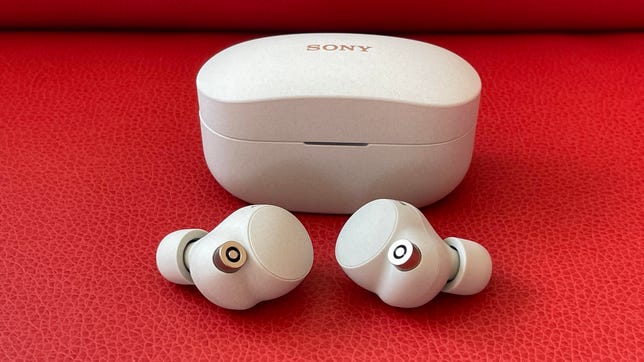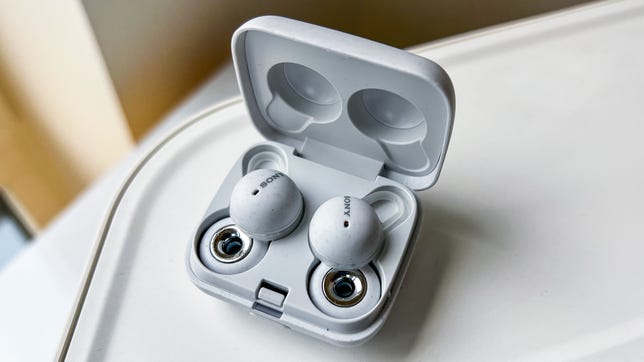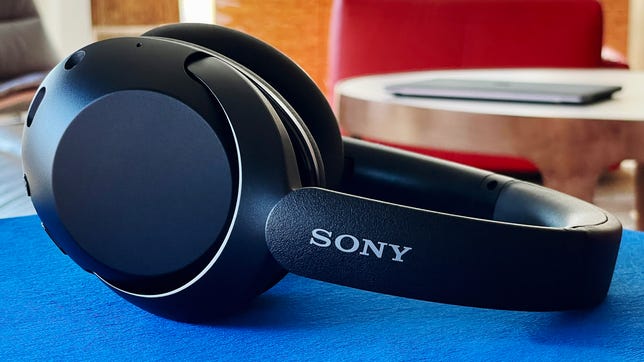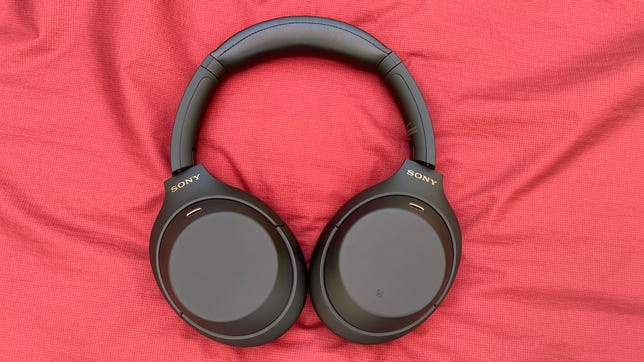Technologies
Sony Headphone Deals: Prices on New Headphones Start at $10
We’ve compiled some of the top bargains currently available on Sony headphones and earbuds.

There are a ton of headphone options out there, and finding a quality pair can feel like looking for a needle in a haystack sometimes, with so many unknown brands on Amazon and $10 pairs up for grabs at your local gas station. It’s never an enjoyable experience to spend any amount of money on headphones or earbuds that let you down.
Long a respected brand in the audio market, Sony makes some of the most popular headphones with a line that runs the gamut from premium noise-canceling, over-ear models to inexpensive on-ear headphones to excellent true-wireless earbuds in a variety of price ranges.
Like with all headphones, prices for Sony headphones tend to fluctuate and throughout the year you’ll find discounts on most Sony models — and sometimes pretty major discounts. While we can’t keep track of all the deals on Sony headphones (there are a lot), we’ve put together a list of current deals and pricing for the most popular — and best — of them. We also have lists of the best deals on Beats headphones and best AirPods deals in case you’re interested in those brands’ earbuds and headphones.
Read more: Best Wireless Earbuds for 2023
David Carnoy/CNET
Unlike the «open» LinkBuds, the LinkBuds S are traditional noise-isolating earbuds with tips you jam in your ears. They’re more compact and lighter than Sony’s flagship WF-1000M4 and also feature Sony’s V1 processor. While their sound and noise canceling don’t quite measure up to the WF-1000XM4’s, they’re close and cost less. They’re the Sony buds for people who can deal with larger buds but want 80 to 85% of those buds’ features and performance for significantly less.
All-time low: $128.
Sarah Tew/CNET
Introduced way back in 1991 (!), the Sony MDR-7506 has long been a favorite headphone of recording engineers and other sound professionals (yes, these are wired headphones). The origins of its design date even further back, since the MDR-7506 headphones are, in fact, a refresh of the Sony MDR-V6 that rolled out in 1985. Both models were designed for the pro sound market, but remain hugely popular with consumers.
While the two models have the same design and are very comfortable, they don’t sound identical. Both offer very well-balanced sound and excellent clarity for their modest prices — and both are great overall values. But the MDR-V6 headphones make a little more bass and sound more laid-back and mellow, while the 7506 headphones are leaner with a more accentuated treble range, which makes the sound a little crisper and livelier.
All-time low: $70.
Sony
If you’re looking for a cheap on-ear wired headphone, the ZX Series is as good a bet as any. It costs $10 — or $20 for the version with a microphone.
All-time low: $10
Sony
The Sony MDR-Z7M2 may not be the flagship audiophile headphone in Sony’s lineup (that would be MDR-Z1R), but it’s still a high-end model that lists for $900 but has been on sale for $600. I reviewed the earlier version of the Z7 (the M2 at the end stands for Mark 2, or second generation) and it sounded great and was comfortable. To be clear, this is an audiophile headphone and sounds best with the right audio equipment, which may include a headphone amplifier or a high-resolution portable music player (notice the Sony Walkman player, which isn’t included, in the photo).
All-time low: $570
David Carnoy/CNET
While the C500’s design sensibility has more in common with the high-end WF-1000XM4 than their predecessor, the WF-XB700 Extra Bass, the C500 is not a noise-canceling model and is pretty basic as far as earbuds go, with no ear-detection sensors or transparency mode. But the buds are compact, lightweight, fit comfortably and sound good for an entry-level model. Read our Sony C500 first take.
All-time low price: $58
David Carnoy/CNET
When you have a product that a lot of people love, change can be risky. Such is the case for Sony’s WH-1000XM5, the fifth generation of the 1000X series headphones, which were first released in 2016 as the MDR-1000X Wireless and have become increasingly popular as they’ve improved with each generation. Over the years, Sony has made some tweaks to the design, but nothing as dramatic as what it’s done with the WH-1000XM5. Other than the higher $400 price tag ($50 more than the WH-1000XM4), most of those changes are good, and Sony’s made some dramatic improvements with voice-calling performance as well as even better noise canceling and more refined sound.
All-time low price: $292
Sony
The WH-CH710N is Sony’s entry-level noise-canceling headphones. At their list price of $148, they’re grossly overpriced, but a lot more compelling when they go on sale, which they often do (look for them for less than $100 or ideally at $78, their low price). The set’s sound and noise-canceling features are a big step below what you get with the WH-1000XM4, but these are overall competent headphones that are lightweight and comfortable to wear. In other words, this pair is far from the best but it’s a good choice if you can’t afford something higher-end. No carrying case is included.
All-time low price: $78
David Carnoy/CNET
No earbuds are perfect and not everybody will love the fit of the Sony WF-1000XM4 buds or be able to afford their high price. But if you’re looking for great-sounding earbuds with excellent noise canceling, solid voice-calling capabilities and good battery life, these buds check all the boxes. And unlike the earlier WF-1000XM3, these are water-resistant with an IPX splash-proof rating.
Bose’s QuietComfort Earbuds also have top-notch noise canceling and sound quality, but the Sony is right there with the Bose for noise canceling. Some might even say it’s a touch better in that department. The Sony offers better sound quality and has a more compact design, particularly for the case — though the Sony buds certainly aren’t small.
All-time low price: $180
David Carnoy/CNET
The LinkBuds are, in a sense, Sony’s answer to Apple’s standard AirPods. While they don’t sound as good as Sony’s flagship WF-1000XM4 noise-isolating earbuds, they offer a discreet, innovative design and a more secure fit than the AirPods, as well as good sound and very good voice-calling performance.
Like the third-gen AirPods, their open design allows you to hear the outside world — that’s what the ring is all about. That makes them a good choice for folks who want to hear what’s going around them for safety reasons or just don’t like having ear tips jammed in their ears. They also have a few distinguishing extra features, including Speak to Chat and Wide Area Tap. Instead of tapping on a bud, you can tap on your face, just in front of your ear, to control playback.
They’re IPX4 splash-proof and thanks to their fins — Sony calls them Arc Supporters — they lock in your ears securely and work well for running and other sporting activities.
All-time low price: $128.
David Carnoy/CNET
As for the WH-XB910N, this is the step-down model from the WH-1000XM4. It’s an Extra Bass model, so it does have a preponderance of bass. This updated version looks the earlier XB900N but offers improved noise canceling and multipoint Bluetooth pairing, so you can pair it with your phone and computer simultaneously. It also supports Sony’s LDAC audio codec. It often sells for around $150 or slightly less. At that price, it’s a decent value.
While improved, the noise canceling isn’t quite up to the level of the WH-1000XM4. And the WH-XB910N doesn’t have some of that model’s extra features, such as Speak to Chat, wearing detection sensors and Sony’s Precise Voice Pickup technology. However, it does have a Quick Attention Mode, which allows you to put your hand over the ear cup to go from noise canceling to an ambient-aware transparency mode. Also, this headphone now comes with a hard case like the WH-1000XM4. Battery life is rated at up to 30 hours at moderate volume levels — that’s the same as what you get from the WH-1000XM4.
All-time low price: $123
David Carnoy/CNET
While they’re no longer Sony’s flagship noise-canceling headphones, the WH-1000XM4 are still very good headphones and worth considering if you can find them at a big discount.
All-time low price: $248.
How we test headphones at CNET
We test headphones based on five key criteria, comparing similarly styled and priced models. These criteria include design, sound quality, features, voice-calling performance and value.
Evaluating design, we assess not only how comfortable the headphones or earbuds fit (ergonomics) but their build quality and how well the controls are implemented. For earbuds, we also look at water- and dust-resistance ratings.
We evaluate sound quality by listening to a set playlist of music tracks and comparing the headphones to top competing products in their price range. Sonic traits such as bass definition, clarity, dynamic range and how natural the headphones sound are key factors in our assessment.
Some great-sounding headphones aren’t loaded with features, but we do take any extra features into account. These include everything from noise-canceling and transparency modes (ambient sound mode) to special sound modes to ear-detection sensors that automatically pause your music when you take the headphones off your ears.
When we test voice-calling performance, we make calls in the noisy streets of New York and evaluate how well the headphones reduce background noise and how clearly callers can hear your voice.
We determine value after evaluating the strength of the earbuds against all these criteria and what the headphone is able to deliver compared to other models in its price class.
More audio recommendations
- Best Cheap True Wireless Earphones
- Best Earbuds for Running for 2023: Bone Conduction and More
- Protect Your AirPods: 5 Cases Under $20
- Best Headphones for 2023: Top Picks for All Styles
- 7 Great AirPods Pro Alternatives That Cost a Lot Less
- Best Cheap Earbuds and Headphones for 2023
- Best Earbuds and Headphones for Working Out for 2023
- Best Headset for Working From Home in 2023
- Best Soundbars for 2023
- 5 True Wireless Earbuds Worth Buying for Under $40
- Best AirPods Max Accessories for 2023
Technologies
Today’s Wordle Hints, Answer and Help for Nov. 4, #1599
Here are hints and the answer for today’s Wordle for Nov. 4, No. 1,599.

Looking for the most recent Wordle answer? Click here for today’s Wordle hints, as well as our daily answers and hints for The New York Times Mini Crossword, Connections, Connections: Sports Edition and Strands puzzles.
Today’s Wordle puzzle begins with one of the least-used letters in the alphabet. (Check our full list ranking the letters by popularity.) If you need a new starter word, check out our list of which letters show up the most in English words. If you need hints and the answer, read on.
Today’s Wordle hints
Before we show you today’s Wordle answer, we’ll give you some hints. If you don’t want a spoiler, look away now.
Wordle hint No. 1: Repeats
Today’s Wordle answer has one repeated letter.
Wordle hint No. 2: Vowels
Today’s Wordle answer has two vowels, but one is the repeated letter, so you’ll see that one twice.
Wordle hint No. 3: First letter
Today’s Wordle answer begins with V.
Wordle hint No. 4: Last letter
Today’s Wordle answer ends with E.
Wordle hint No. 5: Meaning
Today’s Wordle answer can refer to the place where something happens, especially an organized event such as a concert, conference, or sports event.
TODAY’S WORDLE ANSWER
Today’s Wordle answer is VENUE.
Yesterday’s Wordle answer
Yesterday’s Wordle answer, Nov. 3, No. 1598 was AWOKE.
Recent Wordle answers
Oct. 30, No. 1594: LATHE
Oct. 31, No. 1595: ABHOR
Nov. 1, No. 1596: MOTEL
Nov. 2, No. 1597: RABID
Technologies
Why You Should Consider a Burner Phone for Your Holiday Travel This Year
If you’re traveling internationally, carrying a simple phone that doesn’t store personal information can be a smart move when entering the US.
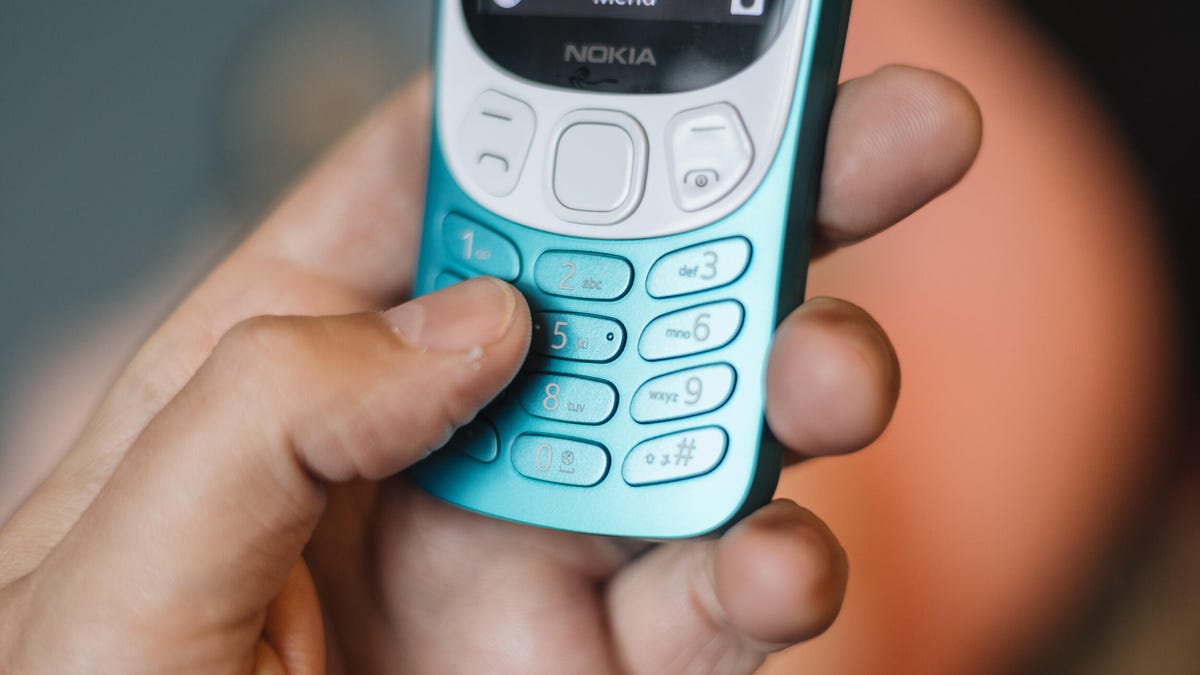
Travel is challenging enough, and this year adds a new hurdle. US border agents are stepping up searches of travelers entering the country — even US citizens returning from overseas — and that extends to their personal devices. These searches can go beyond a quick look, giving agents the authority to copy or analyze a phone’s contents.
According to new figures from US Customs and Border Protection, nearly 15,000 device searches were carried out between April and June, with over 1,000 of them using advanced tools that copy or analyze what’s on a phone. The rising numbers raise questions about how much personal data travelers may be handing over without realizing it.
So what’s the solution? A burner phone. It’s the ultimate defense for keeping your personal data private when you travel, ensuring you stay connected without handing over your entire digital life at the border.
But the appeal goes beyond privacy. A stripped-down phone is also the perfect escape from the constant notifications and screen-time vortex of your primary device. Even celebrities such as Conan O’Brien have embraced simpler phones to cut through the noise. Whether you’re crossing a border or just trying to cross the street without distractions, a burner might be the smartest tech you own.
Read more: Best Prepaid Phone of 2025
Although carriers have offered prepaid phones since the ’90s, «burner phones» or «burners» became popular in the 2000s following the celebrated HBO series The Wire, where they helped characters avoid getting caught by the police. Although often portrayed in that light, burners aren’t only used by criminals; they’re also used anyone concerned with surveillance or privacy infringement.
What is a burner phone, and how does it work? Here’s everything you need to know about burners and how to get one.
Don’t miss any of our unbiased tech content and lab-based reviews. Add CNET as a preferred Google source.
What is a burner phone?
A burner phone is a cheap prepaid phone with no commitments. It comes with a set number of prepaid call minutes, text messages or data, and it’s designed to be disposed of after use.
Burners are contract-free, and you can grab them off the counter. They’re called burner phones because you can «burn» them (trash them) after use, and the phone can’t be traced back to you, which makes them appealing to criminals. Burner phones are typically used when you need a phone quickly, without intentions of long-term use.
Burners are different from getting a regular, contract-bound cellphone plan that requires your information to be on file.
Why should you use a burner phone?
Burner phones are an easy way to avoid cellphone contracts or spam that you get on your primary phone number. Burners aren’t linked to your identity, so you can avoid being tracked down or contacted.
You don’t have to dispose of a burner phone after use. You can add more minutes and continue using it. Burner phones can still function as regular phones, minus the hassle of a contract.
You can also get a burner phone as a secondary phone for a specific purpose, like having a spare phone number for two-factor authentication texts, for business, or to avoid roaming charges while traveling. Burner phones are often used by anyone concerned with privacy.
Read more: The Data Privacy Tips Digital Security Experts Wish You Knew
Burner phones, prepaid phones, smartphones and burner SIMs: What’s the difference?
Burner phones are cheap phones with simple designs that lack the bells and whistles of a smartphone. Because they’re designed to be disposable, you only get the essentials, as seen by the most common version, the flip phone.
All burner phones are prepaid phones, but not all prepaid phones are burners. What sets a burner apart is that you won’t have to give away any personal information to get one, and it won’t be traceable back to you. Again, a burner phone is cheap enough to be destroyed after use.
Prepaid smartphones are generally low-end models. You can use any unlocked smartphone with prepaid SIM cards, essentially making it a prepaid phone.
If you want a burner, you don’t necessarily have to buy a new phone. You can get a burner SIM and use it with an existing phone. Burner SIMs are prepaid SIMs you can get without a contract or giving away personal information.
Where can you buy a burner phone?
Burner phones are available at all major retail outlets, including Best Buy, Target and Walmart. They’re also often available at convenience stores like 7-Eleven, local supermarkets, gas stations and retail phone outlets like Cricket and Metro.
You can get a burner phone with cash, and it should cost between $10 and $50, although it may cost more if you get more minutes and data. If you’re getting a burner phone specifically to avoid having the phone traced back to you, it makes sense to pay with cash instead of a credit card.
If you just want a prepaid secondary phone, you can use a credit card. Just keep in mind that credit cards leave a trail that leads back to you.
There are also many apps that let you get secondary phone numbers, including Google Fi and the Burner app. However, these aren’t burners necessarily because the providers typically have at least some of your personal information.
If you’re just looking to get a solid prepaid phone without anonymity, check out our full guide for the best prepaid phone plans available. We also have a guide for the best cheap phone plans.
Technologies
Chrome Autofill Now Supports Passport, Driver’s License and Vehicle Info
Soon, you’ll never need to remember anything ever again.

Computer users are accustomed to web browsers autofilling everything from names and addresses to credit card numbers. Now, Google Chrome is adding new enhanced autofill options that allow users to automatically populate fields for passports, driver’s licenses, and their vehicle’s license plate or VIN, Google said in a blog post on Monday.
Desktop users must choose to turn on the feature, which is called enhanced autofill. Otherwise, it stays off. To turn it on, open Chrome, and at the top right of your browser, select more, then settings, then autofill and passwords. Finally, choose enhanced autofill and turn it in.
Google says Chrome now can «better understand complex forms and varied formatting requirements, improving accuracy across the web.» The company also says that enhanced autofill will be «private and secure.»
This enhanced autofill update is available in all languages, and more data options will be supported in the coming months.
A representative for Google said the company had no additional comment.
Don’t miss any of our unbiased tech content and lab-based reviews. Add CNET as a preferred Google source.
Chrome is a critical component in Google’s business. The web browser, currently the most popular in the world with a 73% market share, according to GlobalStats, provides the company with valuable user data that it uses to sell advertising. Advertising is how Google makes the majority of its revenues. New features help keep users loyal to Chrome, making it more difficult for them to switch to other browsers, including those from companies like Perplexity and OpenAI.
-

 Technologies3 года ago
Technologies3 года agoTech Companies Need to Be Held Accountable for Security, Experts Say
-

 Technologies3 года ago
Technologies3 года agoBest Handheld Game Console in 2023
-

 Technologies3 года ago
Technologies3 года agoTighten Up Your VR Game With the Best Head Straps for Quest 2
-

 Technologies4 года ago
Technologies4 года agoVerum, Wickr and Threema: next generation secured messengers
-

 Technologies4 года ago
Technologies4 года agoBlack Friday 2021: The best deals on TVs, headphones, kitchenware, and more
-

 Technologies4 года ago
Technologies4 года agoGoogle to require vaccinations as Silicon Valley rethinks return-to-office policies
-

 Technologies4 года ago
Technologies4 года agoOlivia Harlan Dekker for Verum Messenger
-

 Technologies4 года ago
Technologies4 года agoiPhone 13 event: How to watch Apple’s big announcement tomorrow

